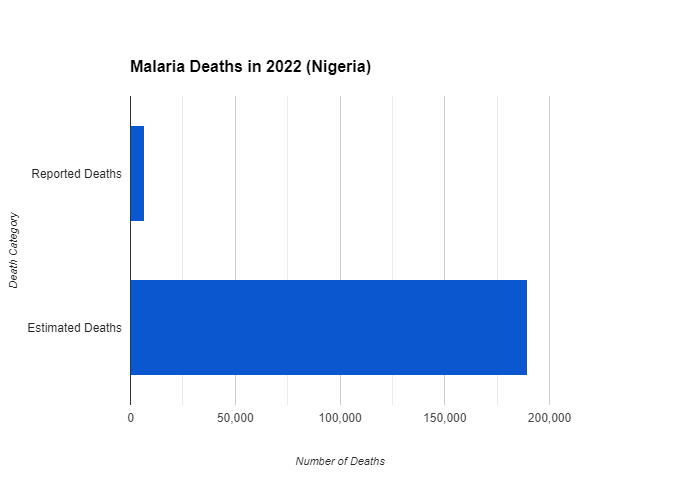Sokoto State is witnessing a surge in malaria cases as heavy rains that began on the 1st of August, 2024 have created breeding grounds for mosquitoes. Health facilities and pharmacies across the state are seeing a steady increase in patients seeking treatment for the disease, highlighting a growing health crisis fueled by the rainy season.
Malaria, a mosquito-borne parasitic infection, remains one of Nigeria’s most significant public health challenges. The disease manifests in symptoms like high fever, chills, headaches, and fatigue, with severe cases leading to life-threatening complications if left untreated.
Sokoto state remains a malaria hotspot in Nigeria. Malaria in Sokoto state is still high even though there has been a reduction in prevalence in recent years. In 2015, the prevalence rate was around 46.6 per cent which was one of the highest in the country but a 2021 study showed a prevalence of 35.9 per cent. The state faces challenges in accessing healthcare, especially in rural areas, which impacts malaria control efforts.

According to the 2022 World Malaria Report, Nigeria accounts for the highest percentage of the global malaria burden compared to any other country, with 27 per cent of the global estimated malaria cases and 31 per cent of the estimated deaths. The country accounted for an estimated 55% of malaria cases in West Africa in 2022.
As the rains start in Sokoto, the state is battling an influx of malaria patients that threatens to overwhelm healthcare providers. Residents are increasingly falling ill, with hospitals and pharmacies flooded by patients seeking treatment.
Clinics and pharmacies recount experiences
At Al-ghazal Medicine Store, Pharmacist Abdul Al-ghazal told ASHENEWS that most patients suffered from malaria during this period. This makes them come often to purchase the drugs, “During the rainy season, malaria cases spike because of increased mosquito bites, especially at night,” Abdul explained.
He noted that patients typically recover after three to four days of treatment with anti-malarial drugs but emphasised the importance of prevention, advising people to use mosquito nets and eliminate stagnant water around their homes to reduce mosquito populations.
On average, his pharmacy treats around 20 malaria patients weekly. He commonly prescribes Amtensoft Forte, costing N2,600, for a three-day course. If the condition persists, the pharmacy refers patients to hospitals for further evaluation.
Read Also: Nigeria records 39 Mpox cases, zero deaths – NCDC
Similarly, at Rahusa Pharmaceutical, Pharmacist Adamu Anas has witnessed a steady stream of malaria patients due to the rains in Sokoto. “Every day, about 20 people come to our pharmacy with malaria complaints. Before, people used to complain about the heat and lack of rain. But now, they are complaining about how the rain is affecting their environment and health,” Adamu said.
He explained that there are two main types of the disease in the region: P+1 and P+2. According to him, P+1 requires three days of drug treatment, while P+2 necessitates an initial three days of Artenether/Lumefantrine injections, followed by three more days of medication. Despite the availability of treatment, the sheer number of cases has stretched resources thin.
Meeting the demands
Pharmacies across Sokoto are stocking up on essential malaria medications to meet the demand. Mr Usman Shartara, who runs Shartara Pharmacy, noted that they treat about five malaria patients daily. “We offer both tablets and injections, depending on the patient’s preference,” he said.
Injectable treatments, he explained, include Artenether/Lumefantrine, Artesunate, and Arteether, which must be administered for three consecutive days to ensure recovery. “Some patients choose injections, while others prefer tablets. We advise those taking tablets to use them for three days, and those getting injections are told to return daily for three days”, he said.
The situation is equally dire at hospitals as they are becoming overstretched. Mrs Abba Tajudeen, who works at El Amincal Hospital in Mabera, shared that they admitted 20 patients for malaria in August alone. “The heavy rainfall this season has caused an increase in the cases,” she said.
Tajuden explained, “The heavy rainfall this season has caused an increase in malaria cases. Stagnant water left by the rains has become an ideal breeding site for mosquitoes, worsening the situation.”
Tajudeen’s own experience with malaria underscores the pervasiveness of the disease. “Even I and my children have had the disease this month. I just took an injection this morning,” she added.
Malaria prevalence can fluctuate based on factors like climate, population movement, and implementation of control measures. As this disease continues to affect countless families in Sokoto, the healthcare sector is working hard to keep up with the demand for treatment. However, the ongoing rains and mosquito infestations suggest that this battle is far from over. Residents are urged to take preventive measures, such as using insecticide-treated nets and eliminating stagnant water, to protect themselves from the rising threat.


![[SPECIAL REPORT] Malaria cases surge in Sokoto as heavy rainfall sparks health crisis Malaria](https://ashenewsdaily.com/wp-content/uploads/2024/08/Pharmacy-in-Sokoto-768x576.jpg)